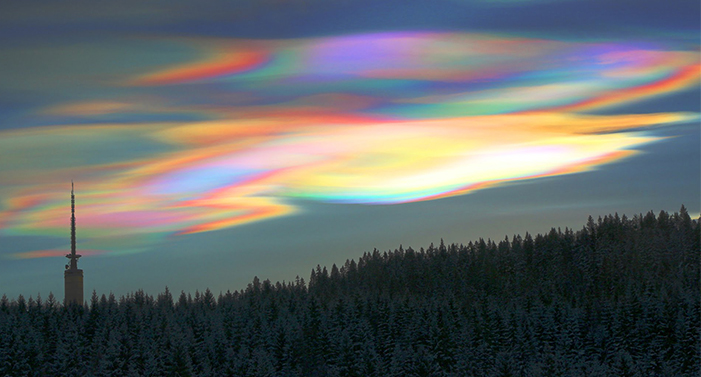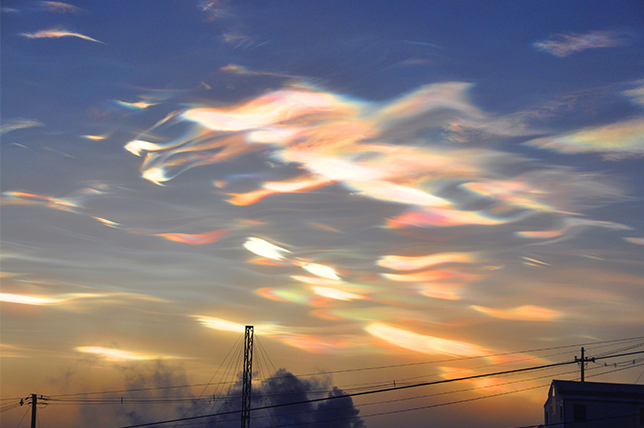What are
Nacreous Clouds?
They are some of the highest and rarest clouds on Earth, but these iridescent specimens are both beauty and beast. As a type of polar stratospheric cloud, they play a central role in the chemical destruction of the ozone layer.
Named for the French “nacré”, meaning “mother of pearl”, nacreous clouds form close to the poles in the extreme cold of winter. When air temperatures drop below -83°C, small amounts of moisture in the otherwise dry stratosphere condense into wispy clouds of ice crystals.
 Because the clouds form at altitudes of over 15,000m, the Sun keeps illuminating them even when – from the point of view of people on Earth’s surface – it is just below the horizon. The ice crystals scatter and diffract light, making the clouds glow with iridescent colours against the dark pre-dawn or post-dusk skies.
Because the clouds form at altitudes of over 15,000m, the Sun keeps illuminating them even when – from the point of view of people on Earth’s surface – it is just below the horizon. The ice crystals scatter and diffract light, making the clouds glow with iridescent colours against the dark pre-dawn or post-dusk skies.
Nacreous clouds accelerate the chemical reactions that convert benign chlorofluorocarbons (CFCs) into ozone-destroying chlorine. During the coldest winters they can last well into the spring, trashing the ozone layer all the while.

Named for the French “nacré”, meaning “mother of pearl”, nacreous clouds form close to the poles in the extreme cold of winter. When air temperatures drop below -83°C, small amounts of moisture in the otherwise dry stratosphere condense into wispy clouds of ice crystals.

Nacreous clouds accelerate the chemical reactions that convert benign chlorofluorocarbons (CFCs) into ozone-destroying chlorine. During the coldest winters they can last well into the spring, trashing the ozone layer all the while.

